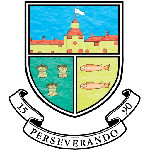Geography
| Miss L Hodgkiss (Head of Department) | lhodgkiss@conyers.org.uk | Mrs A O’Boyle | aoboyle@conyers.org.uk |
| Mr S Pickering | spickering@conyers.org.uk | Mrs C Cooper | ccooper@conyers.org.uk |
Key Stage 3 Curriculum Map
Curriculum Intent
Aim to encourage learners to have confidence in navigating ‘uncharted’ waters. It contextualizes the world around us: wars, population, natural disasters, weather and crime can be understood through geography and its sense of place and process. It exists in a unique position to teach a range of geographical skills, as well as core skills such as: literacy, numeracy, the sciences and ICT whilst studying and investigating the world. Geography develops students awareness of the world to create better global citizens.
Key Knowledge and Skills
Year 7
Entire KS3 is a combination of human and physical units. Introduce the basic idea of human, physical and environmental geography focusing on the UK. Map skills built on from KS2 and developed. Settlement develops an understanding of where we live, weather and climate explores the physical processes but moves on to look at how we interact with it. Ecosystems build on the idea of climate and thus how the differing environments around the globe have led to differences in the life that inhabits it. Before going on to understand how humans can impact on them. Africa explores a range of human and physical themes some linked to units earlier in the year. Finally, power of water explores how rivers can develop the landscape and the impact they can have on humans.
Year 8
Entire KS3 is a combination of human and physical units. Earthquakes look at the structure of the earth and the processes that occur within it leading to the movement of plates and thus earthquakes. Going on to explore the impact they can have on humans whilst examining a range of factors that impact on their effects. Development explores how we measure development and investigate global interdependence and Industrialisation. The Rise of China explores a range of human and physical themes some linked to units earlier in the year and year 7. Coasts explores how the sea can develop the landscape and the impact it can have on humans. Industry examines the impact that different industries have on the environment. Students are also required to demonstrate understanding of sustainability and environmental pressure groups.
Year 9
Entire KS3 is a combination of human and physical units. Volcanoes recapture the structure of the earth and the processes that occur within leading to the movement of plates and thus the formation and eruption of volcanoes. Going on to explore the impact they can have on humans whilst examining a range of factors that impact on their effects. 21st Century Issues explores a range of modern day issues facing mankind, looking at various scales. Geography of Health looks at how the two concepts are interrelated. It explores a variety of health issues on different scales and the geographic impacts of such issues.
Sequence Discussion
Year 7
Introduction to Geography first unit to go over basic understanding and skills that are the foundation for Geography and all units. So ensures that pupils are at the same starting point. This is followed up by map skills unit that is a large part of AO4 and then these skills can be built into other units and assessments. The human and physical units shown below are mixed up and taught in this particular sequence as ideas learnt are sometimes revisited in later units. For example, climate is taught in half term 3 but this process is brought into the units: ecosystems and Africa, in later half terms. The fieldwork is based around the Settlement unit
Year 8
The units in Yr8 are more challenging than Yr7 in regards to the skills and processes studied. Still use and develop understanding of command words to describe and explain but develop written work with the introduction of the command word evaluate. This builds on the command word explain but pushes pupils to consider more than one side to an answer.
Earthquakes mark a clear step up from Yr7 with more complex processes studied, such as convection currents in the mantle driving plate movement. Some of the case studies used in units this year require a higher level of maturity and sensitive handling, such as Bhopal Industrial Disaster in Bhopal.
The human and physical units shown below are mixed up and taught in this particular sequence as ideas learnt are sometimes revisited in later units. For example, counties level of development is taught in half term 2 under the unit development and revisited in The Rise of China and Industry.
Year 9
Once again, the skills and processes taught within units are more complex than in Yr8. Written work is being further developed with use of a wider range of command words, such as discuss, comment on and assess. Pupils are now becoming adept at responding to a wide range of command words which is necessary for the GCSE.
Volcanoes unit builds on processes introduced in Yr8 Earthquakes and together link to the GCSE unit Natural Hazards. This is the year when pupils select their options for GCSEs and the units selected are designed to be of interest to ALL pupils even those not selecting as an option. The 21st Century World Issues unit is focused on current issues facing the world and the Geography of Health uses a range of case studies including one based on our local industry.
Year 7
Half Term 1
Introduction to Geography
Map Skills
Half Term 2
Settlement
Half Term 3
Weather and Climate
Half Term 4
Ecosystems
Half Term 5
Africa
Half Term 6
DME
FW – Yarm
Year 8
Half Term 1
Earthquakes
Half Term 2
Development
Half Term 3
The Rise of China
Half Term 4
Coasts
Half Term 5
Industry
Half Term 6
DME
FW – Redcar
Year 9
Half Term 1
Volcanoes
Half Term 2
Geography of Health
Half Term 3
21st Century World Issues
Half Term 4
GCSE – Challenge of Resource Management
Half Term 5
GCSE – Challenge of Resource Management
Half Term 6
DME

